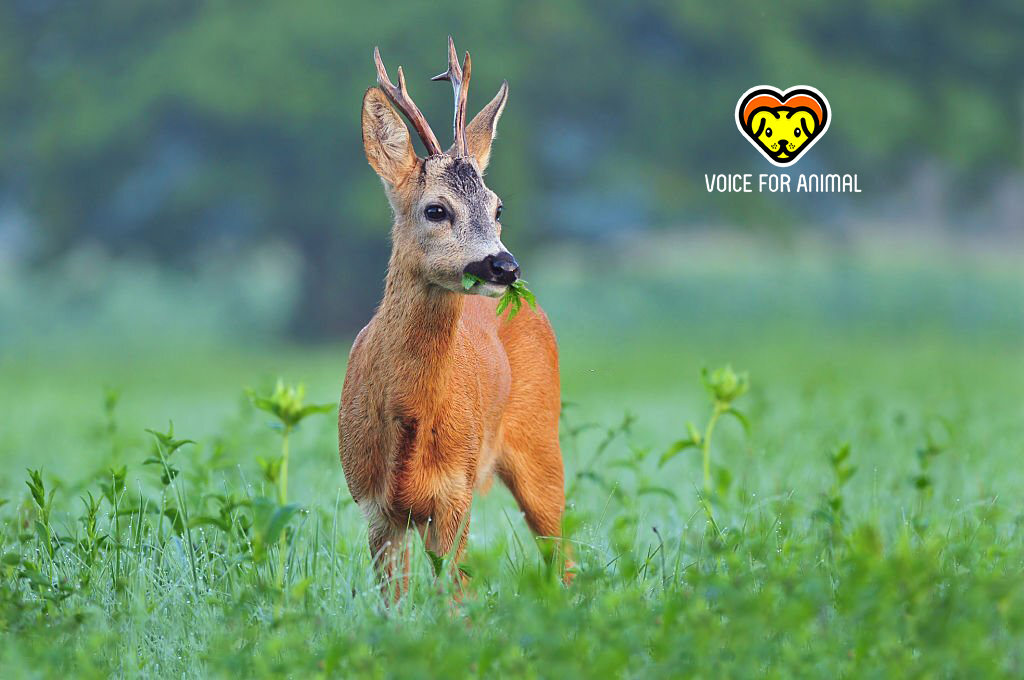Mainly we can divide animals into three parts by their eating habit. They are carnivorous, herbivorous and omnivorous. All three types of animals have special features for eating their own diet. Carnivores have special adaptations to catch their preys...
Mainly we can divide animals into three parts by their eating habit. They are carnivorous, herbivorous and omnivorous. All three types of animals have special features for eating their own diet. Carnivores have special adaptations to catch their preys while herbivores have special features to eat plant materials. Omnivorous animals eat both carnivorous and herbivorous eat. So they have mixed adaptations.
Carnivorous Animals
These animals feed on the flesh of the other animals. They act as predators. Carnivorous animals have modified features for the flesh-eating habit.
Carnivorous Mammals
They are the competitive and strongest of animals. These animals are of large size and predatory habits. They have several adaptations for flesh eating.
Adaptation of carnivorous mammals
As predators they need to find and capture their prey. In this case they have a variety of adaptations for a carnivorous life, such as sharp claws, powerful jaws with heavy musculature and strong projecting canines. These help them to capture, tear and kill their prey.
Modification of the dentition
The carnivores have to kill their prey mainly with its teeth. The teeth are modified to tear, cut the flesh and crush the hard bones and tendons. The front part of the dentition is highly useful in biting and tearing. The canines are long, sharp and pointed. Carnivores using these to immobilize the victim before killing. The pair of teeth bite on each other like a pair of scissors for cutting flesh. These are carnassial teeth.
Modifications in cranial and jaw muscles for mastication
The large temporalis is typical of carnivores, which employ force with their canines to kill and subdue prey.
Shortening the gut
Lions, Tigers –
They have digitigrade locomotion and developed powerful retractile claws. They are very dangerous hunters.
Bears –
They have changed from a carnivorous diet into an omnivorous diet reducing some carnivorous features. They feed on fruits, honey and insects. Teeth are rudimentary.
Seals, Walruses and Sea Lions –
They are aquatic carnivores. Seals are fish eaters and they have numerous peg like teeth. Walruses feed on mollusks and their upper canines become developed as tusks for crushing the molluscan shells.
Whales –
Some of them have teeth and others haven't teeth. Toothless whales open the mouth and fill it with water containing small crustaceans. Toothed whales hunt small animals for their food.
Carnivorous Reptiles
Snakes –
Salivary glands are well-developed and, in some forms, modified to form poison glands. Snake venom contains a complex mixture of enzymes, which help to break down the tissues of prey.
Crocodiles –
They have long snouts with the midline near the tip and provided with valves. They can approach close to a prey in water grasp it with its jaws and drag it down under water. They have very sensitive hearing and a good eyesight.
Carnivorous Birds
Owls –
They are night hunters. The huge binocular eyes of owls have great light-gathering power and their ears are long asymmetrical slits hidden behind the facial disks. They mainly detect their prey by sound. Mouse is the main hunt in their feeding diet.
Eagles –
They have very sharp eyes. They can hunt small animals such as kids of mammals.
Herbivorous Animals
This animals feed only on plant materials, such as leaves, roots and seeds.
Herbivorous Mammals
Herbivores eat only plant materials that contain a great deal of supporting material, including cellulose. Herbivores also show various adaptations to exploit plant food sources.
Adaptations of herbivorous mammals
Modification of teeth
Teeth play an important role in herbivorous mammals. Teeth are modified for the special functions of grinding food, chewing, cutting or gnawing food. Cheek teeth are modified as a battery of grinders for chewing vegetable matter. Incisors are adopted for cutting and cropping.
Modification of limbs
Their limb structure enabling them to run at considerable speeds on the ground because speed is necessary to escape from flesh eating enemies. The lengthening of the limbs enables the animal to run fast.
Cranial adaptations
Their skull must become modified to grind up tough resistant food like cellulose. Herbivores have increased the size of the masseter muscle and reduced the size of the temporalis muscle.
Long digestive tract
Herbivores have longer and more elaborate digestive tracts than carnivores so that food can be retained for digestion for a long time.
Artiodactyla -
The premolars and molars are hypsodont the grinding surfaces of these teeth show selenodont condition. All have four chambered stomach. Diastema is well-developed. Most forms can develop horns or antlers.
Example: cattle, sheep, goat, deer, antelope, giraffe, etc.
Perissodactyla -
Incisors are present on both jaws and canines may be reduced or absent. The well-developed diastema is present. They have long limbs adapted for fast running. There are no horns or antlers on the head.
Example: horse, zebra, rhinoceros, tapir, etc.
Herbivorous other animals -
There are some varieties of fish eating only aquatic plants. In ancient times there were dinosaurs eating only plants materials. For example Brontosaurus. Most of the insects are herbivorous animals.
Omnivorous Animals :
An omnivorous diet appears to have been general in early primates, and similar food habits characterize many living types. The dentition is usually less specialized than in most mammalian groups, the molar teeth are low crowned with rounded cusps. In most of them the canine teeth are rather long and make effective biting weapons. They eat both carnivorous diet and herbivorous diet. So they have mixed adaptations.
Example: Man, Most amphibians, etc.


















